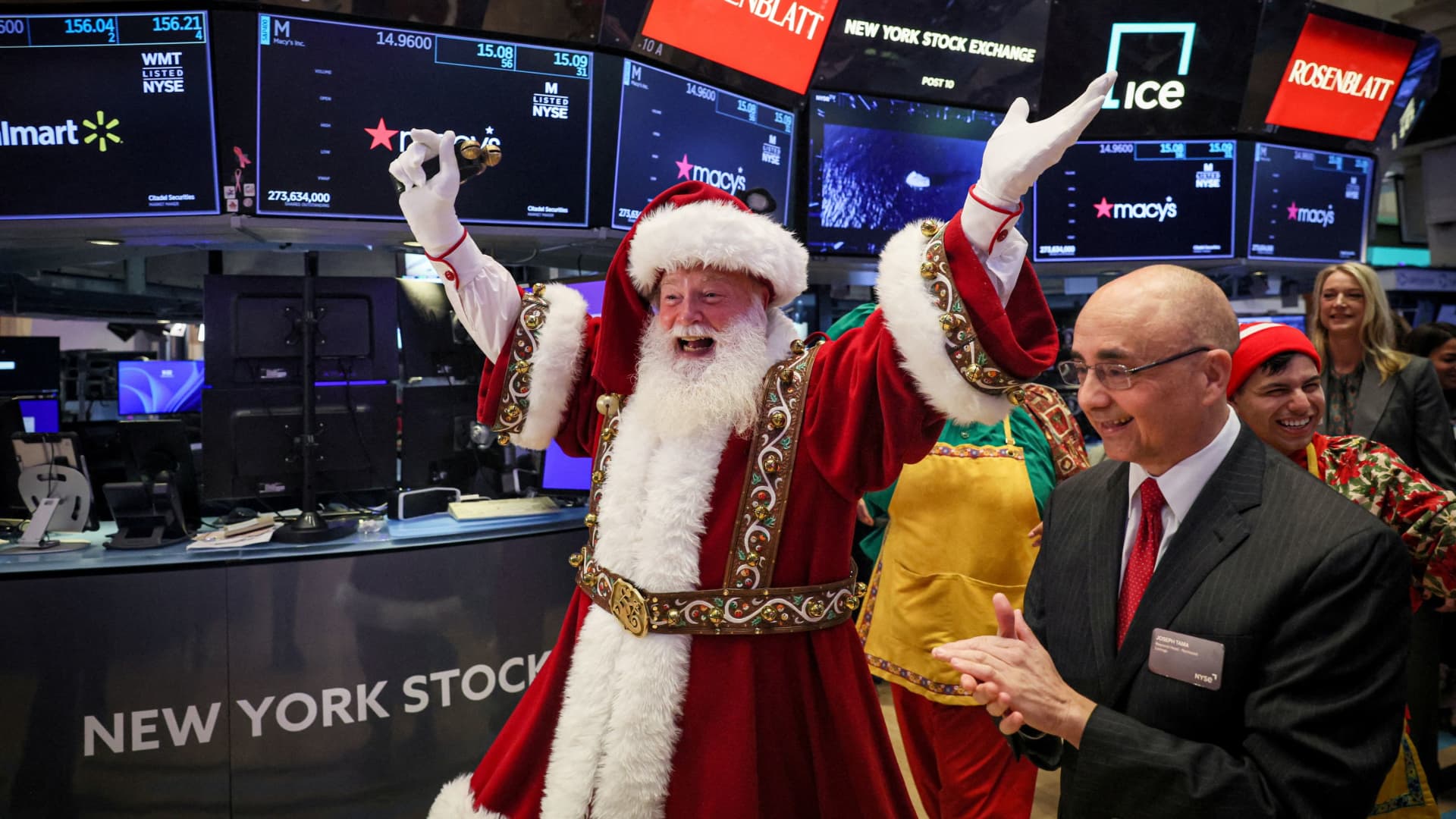The major stock indices rallied higher for their seventh straight week, lifted largely by positive comments on Wednesday by Federal Reserve Chairman Jerome Powell. The Dow Jones Industrial Average gained 2.8% for the week, while the S & P 500 rose 2.5% and the Nasdaq Composite jumped 2.9%. In addition to keeping interest rates unchanged, Powell said the central bank’s efforts to beat down inflation was working and indicated three interest rate cuts are coming in 2024. That gave a big boost to investor sentiment. He also clarified the Fed is willing to cut rates even if the U.S. doesn’t enter a recession. “It could just be a sign that the economy is normalizing and doesn’t need the tight policy,” he said. Powell knows the Fed held on to the transient inflation thesis for too long and as a result didn’t act swiftly enough to raise rates. However, from the moment he did decide to move on rates, the Fed has done a fantastic job. Few thought a soft landing possible, but it’s increasingly looking like the most likely outcome. Powell knows he can’t cut rates before the job of beating inflation is completely done. At the same time, holding rates too high for too long can swing the pendulum too far the other way and cause a hard landing for the economy. As a result, we (and the market in general) are happy to hear that while there may not be plans to cut rates in the near term, a recession isn’t necessary to do so. Powell has to thread a fine needle here but if 2023 has shown us anything, it is that despite the odds, he is capable of doing so. Economic data released this week was favorable, too. The November consumer price index reading came in largely as expected, with the headline number down to 3.1% (from 3.2% in October) and the core index steady at 4% year over year, both in line with forecasts. In addition, the November producer price index release came in a bit below expectations. The weakness is welcome, though, as it still positive and indicates that there isn’t a pressing need for corporations to pass through additional price hikes to protect profit margins. The combination of the two reports may even point to overall corporate margin expansion in the future given the rise in CPI (a proxy for selling costs) outpaced the rise in PPI (a proxy for input costs). Meanwhile, retail sales for November were stronger than expected, a good sign for holiday fourth-quarter retail earnings. Here are the four big things on our radar this coming week: 1. Santa Claus rally? The main data event is Friday’s release of the personal spending and income report, within which we find the core PCE price index, the Fed’s preferred measure of inflation. Current estimates are for the core index to rise 3.3% versus a year ago, a deceleration versus the 3.5% rate in October. The goal is to get inflation back down to the Fed’s 2% target. That means anything below 3.3% will be welcome, so long as it’s not so weak (not below the 2% target) as to spark fears of a hard landing for the economy. Looking ahead, earnings season is winding down. A good reading could help spark an always welcome “Santa Clause Rally.” This happens when stocks appreciate during the period between Dec. 25 and Jan. 2. Why it occurs is anyone’s guess, as is the case with many seasonal patterns. But at least some of the action is likely explained by end-of-year tax moves, positive holiday sales data, or general good vibes at the year’s end (no Grinches). Emotion does impact our behavior and that certainly plays into the market action. 2. Soft landing still intact? The final revision for the third-quarter gross domestic price index — though backward-looking — provides a high-level read on the economy and can help us judge whether the Fed has overtightened to the point of crashing the economy (no reason to believe that is the case right now) or if the soft landing is still intact (we think so). 3. Is housing cooling down? Housing is a crucial economic sector that tends to punch above its weight due to the associated goods and services that come with new home formations. It also represents a large unavoidable cost, which is why sticky inflation in shelter costs have been such a thorn in the Fed’s side. As such, in addition to selling prices (released Friday), inventory levels (on Tuesday) are a key metric to watch as more inventory is key to getting the selling prices down and helping to offset high mortgage rates. 4. Three important earnings reports. No portfolio names report, but FedEx results on Tuesday should highlight shopping activity as well as broader economic insights. Micron on Wednesday will be helpful in better understating where we are in the semiconductor cycle outside of the AI chips. Finally, Club holding Foot Locker is working diligently to reduce its reliance on Nike, which reports Thursday, so anything management shares about its own direct-to-consumer initiatives (sales that bypass third parties like Foot Locker) will help us better understand how things are shaping up for FL. We noted on Thursday that Piper Sandler names Foot Locker a top turnaround play in retail. We like the call, but need to see more progress. Mark your calendar: Our final Monthly Meeting of 2023 is on Tuesday at noon. In the meantime, send along your investing questions and we will answer as many as we can, and some of the rest in future Mailbags . Monday, Dec. 18 After the bell: HEICO Corp (HEI) Tuesday, Dec. 19 8:30 a.m. ET: Housing Starts & Building Permits Before the bell: Accenture (CAN), FactSet Research (FDS) After the bell: FedEx (FDX), Steelcase (SCS) Wednesday, Dec. 20 Before the bell: General Mills (GIS), Winnebago (WGO), Toro Company (TTC) After the bell: Micron (MU), MillerKnoll (MLKN), Worthington Industries (WOR) Thursday, Dec. 21 8:30 a.m. ET: Initial jobless claims 8:30 a.m. ET: Gross Domestic Price Index Before the bell: Carnival Corp (CCL), Cintas (CTAS), Paychex (PAYX) After the bell: Nike (NKE), AAR Corp (AIR) Friday, Dec. 22 8:30 a.m. ET: Personal Spending & Income 10:00 a.m. ET: New Home Sales (See here for a full list of the stocks in Jim Cramer’s Charitable.) As a subscriber to the CNBC Investing Club with Jim Cramer, you will receive a trade alert before Jim makes a trade. Jim waits 45 minutes after sending a trade alert before buying or selling a stock in his charitable trust’s portfolio. If Jim has talked about a stock on CNBC TV, he waits 72 hours after issuing the trade alert before executing the trade. THE ABOVE INVESTING CLUB INFORMATION IS SUBJECT TO OUR TERMS AND CONDITIONS AND PRIVACY POLICY , TOGETHER WITH OUR DISCLAIMER . NO FIDUCIARY OBLIGATION OR DUTY EXISTS, OR IS CREATED, BY VIRTUE OF YOUR RECEIPT OF ANY INFORMATION PROVIDED IN CONNECTION WITH THE INVESTING CLUB. NO SPECIFIC OUTCOME OR PROFIT IS GUARANTEED.
The major stock indices rallied higher for their seventh straight week, lifted largely by positive comments on Wednesday by Federal Reserve Chairman Jerome Powell. The Dow Jones Industrial Average gained 2.8% for the week, while the S&P 500 rose 2.5% and the Nasdaq Composite jumped 2.9%.
Read the full article here
Post Views: 218







